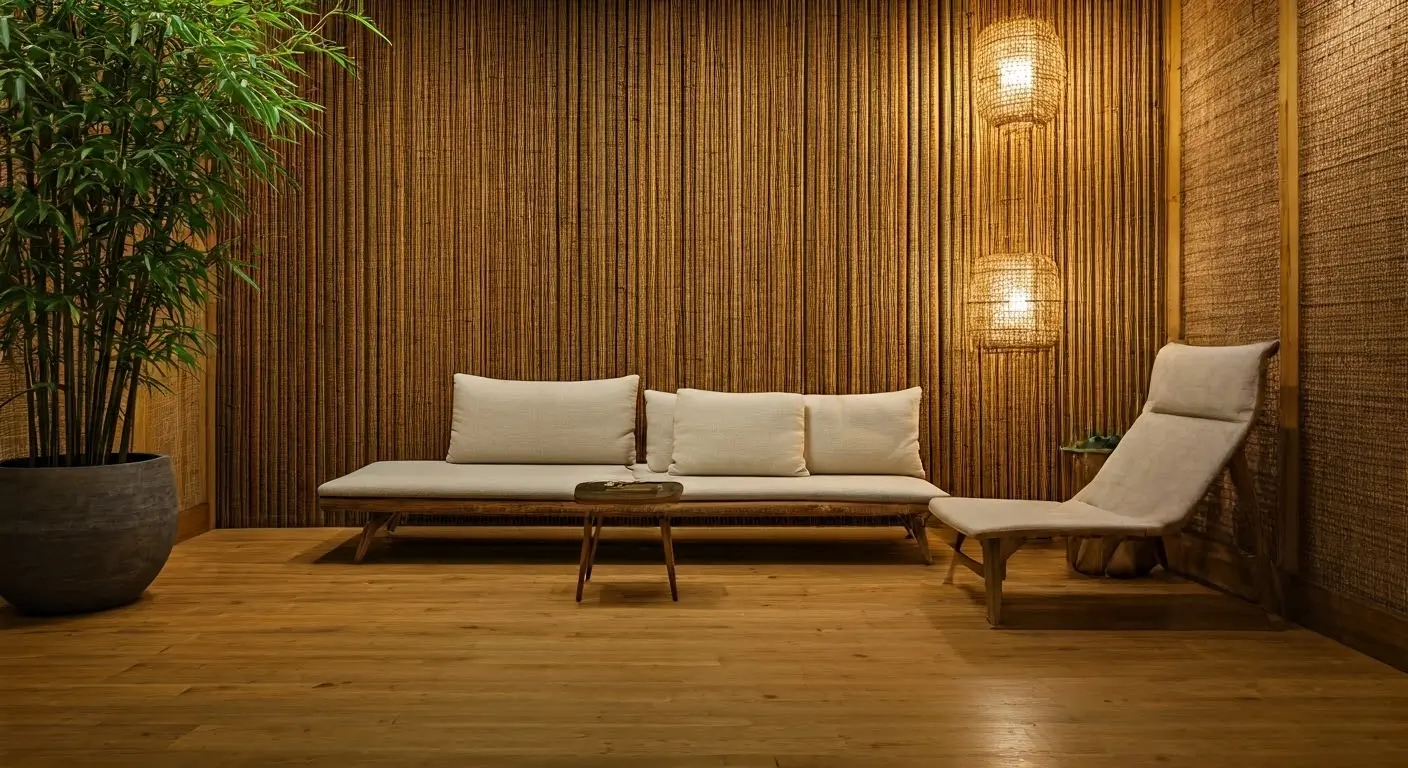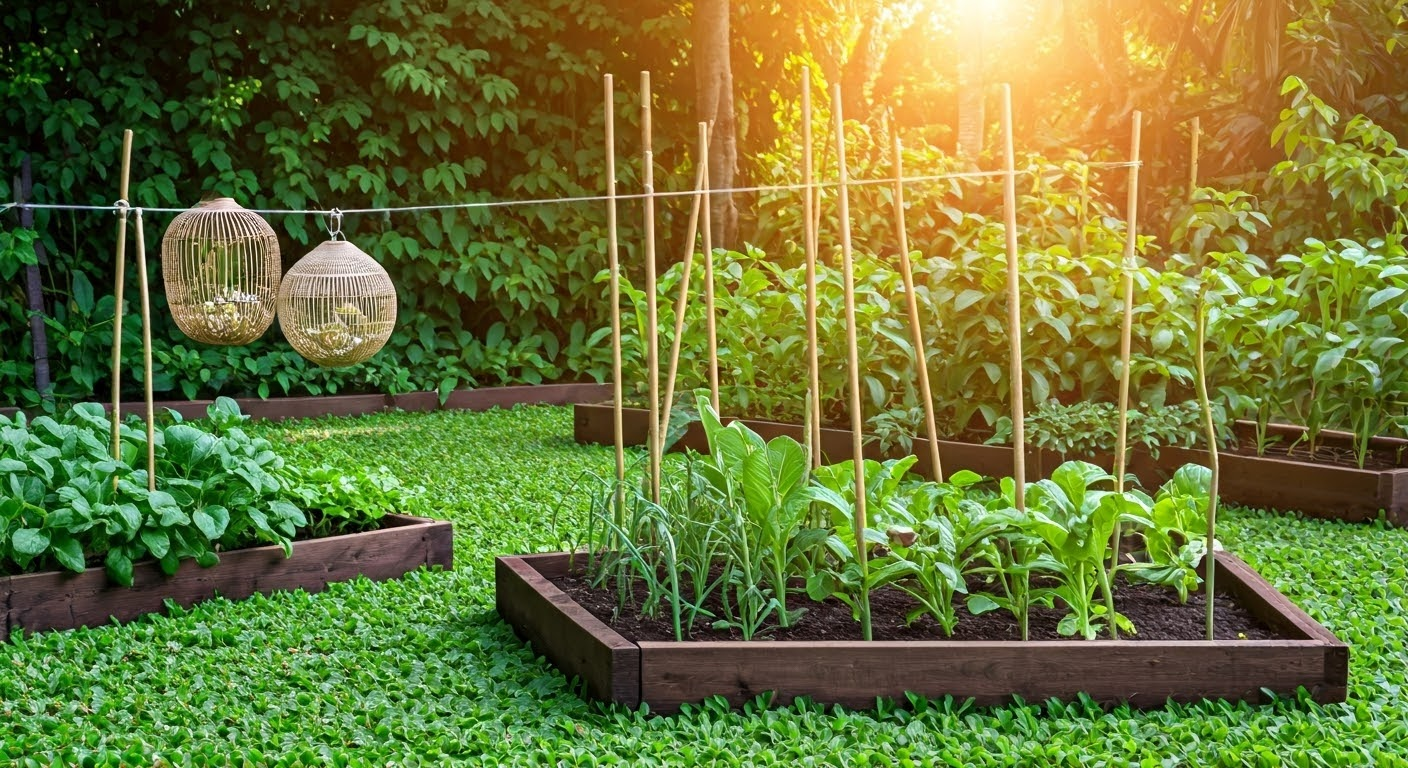Key Highlights
- Discover the significance of sustainable interior design and its positive impact on both the environment and the well-being of occupants.
- This comprehensive guide explores a variety of eco-friendly materials ideal for creating stylish and responsible interior spaces.
- Learn about the growing use of bamboo, cork, and reclaimed wood and how they contribute to a greener approach to design.
- We’ll also cover innovations in recycled metals, glass, and natural stone, highlighting their aesthetic and sustainable qualities.
- This guide provides valuable insights for designers seeking to make conscious and impactful choices for a more sustainable future.
Introduction
In today’s world, people care more about sustainability. Interior design now plays an important role in this effort. Sustainable interior design is not just a trend. It is a key method that looks at how materials and practices affect the environment. Designers make choices that lower our impact on nature while still making places that look good and work well. This guide shares important information about sustainable materials. It helps designers create spaces that are nice to look at and good for the environment.
Understanding Sustainable Interior Design

Sustainable design looks at the whole life of a product. This includes where it comes from, how it’s made, and how it’s thrown away. It uses renewable materials like bamboo and cork that grow back naturally. This helps reduce the cutting down of trees.
Also, sustainable interior design works to make indoor air quality better. By using fewer harmful chemicals in paints, adhesives, and finishes, we can create healthier homes.
People now care more about how their choices affect the earth. They want products and designs that match their values, especially the value of being sustainable. Because of this change in what consumers want, sustainable interior design has become a choice that people find appealing and responsible.
The Importance of Eco-Friendly Materials in Modern Design
Using eco-friendly materials is very important to reduce the damage to our environment from design choices. Regular building materials usually have a big carbon footprint that leads to problems like deforestation, habitat loss, and greenhouse gas emissions. On the other hand, eco-friendly materials come from renewable resources, which lessens the harm done to nature. For example, bamboo is a fast-growing grass that is a great substitute for traditional hardwood. Cork, which comes from the bark of cork oak trees, offers good insulation and helps dampen sound.
Apart from being good for the environment, eco-friendly materials can also be better for your health. When designers use fewer toxic chemicals found in normal materials, they help make healthier indoor spaces. This can lower the chances of real problems like breathing issues and other health risks. Using materials that have low or no volatile organic compounds (VOCs) can also foster a healthier place to live or work.
Key Principles Guiding Sustainable Interior Choices
Sustainable design follows important rules that make sure we take care of the environment. One key point is to focus on energy efficiency. Designers can use features that bring in natural light and choose energy-efficient appliances and lighting. This helps cut down on a building’s energy consumption.
Another important rule is to select friendly and sustainable materials. Designers should pick materials that can be renewed, recycled, and sourced locally whenever they can. For instance, using reclaimed wood helps reduce the need for cutting down new trees, giving new life to old materials. This choice cuts down on waste and supports a more circular economy. In the end, sustainable design is all about creating a more sustainable future for all of us.
Top Sustainable Materials for Interior Design

Today’s designers can choose from many sustainable materials. These materials help create eco-friendly and stylish interiors. Options include bamboo, cork, reclaimed wood, and recycled metals. Each one brings different looks and practical benefits. Let’s look at some top sustainable materials that are changing how we design indoor spaces.
These materials help reduce the environmental impact of building and design. They also enhance the look of a space. Their natural beauty and special traits give character and a feeling of authenticity to interiors.
The Rise of Bamboo in Eco-Friendly Interiors
Bamboo is becoming very popular in sustainable interior design. It grows fast and can be ready for use in just a few years. This makes it a renewable resource. In contrast, traditional hardwoods take many years to mature. Because bamboo grows so quickly, it is a good choice for furniture, flooring, and decorative items.
Bamboo also needs less energy and fewer resources to grow and harvest than regular wood. It uses very little water and doesn’t need pesticides, which helps to lower its environmental impact. Its strength and resilience to moisture make it an excellent choice for different interior projects. Plus, its natural look brings warmth and style to any room.
How Cork is Transforming Green Living Spaces
Cork comes from the bark of cork oak trees. It is a great sustainable material because it has special qualities that benefit the environment. The way cork is harvested is important. Workers carefully take off the bark without hurting the tree. This allows the tree to grow back its bark, which means cork is a renewable resource.
Cork has many qualities that make it perfect for eco-friendly living spaces. Its natural structure helps keep homes warm and cool, which lowers energy consumption. It is also natural at fighting germs, doesn’t cause allergies, and resists mold and mildew, making your indoor air healthier. Here’s how you can use cork:
- Flooring: Cork flooring feels warm and cozy while also reducing noise.
- Wall Coverings: Cork wall tiles add a nice texture and provide insulation for unique and green feature walls.
- Furniture: More designers are using cork in furniture making it a sustainable alternative to regular materials.
Its flexibility, long life, and low water consumption during production make cork a top choice for designers looking for sustainable solutions.
The Beauty and Resilience of Reclaimed Wood
Reclaimed wood brings history and character to indoor spaces. It adds a unique charm that is hard to copy. This wood comes from old barns, factories, and other buildings. Using reclaimed wood helps lessen the need for new timber. This, in turn, helps save forests and stops needless tree cutting.
Besides being good for the environment, reclaimed wood is also beautiful and strong. Each piece has its own story. You can see marks from its previous life, like nail holes and knots. These flaws make furniture, flooring, and decorations look special and real. Reclaimed wood is durable and never goes out of style. It’s a great choice for people who want sustainable and nice-looking interiors that last many years. By recycling old wood, we help create a more circular economy.
Innovations in Sustainable Material Use
The world of sustainable materials keeps changing. New ideas are coming up to lessen the environmental impact of interior design. Researchers and companies are finding smart ways to reuse waste materials and create new eco-friendly choices.
We can see progress in areas like recycled metals, low-impact glass, and natural stone. Let’s look at some cool changes that are influencing the future of sustainable interior design. These new developments show how dedicated the industry is to making a stylish and responsible future.
Advances in Recycled Metals for Elegant Finishes
Recycled metals have come a long way, shedding their industrial image to become sought-after materials for elegant finishes in interior design. Aluminum and steel, in particular, are highly recyclable materials that can be endlessly processed without losing their quality. Using recycled metals significantly reduces the energy required compared to producing new metals, minimizing the impact on the environment.
Designers are finding creative ways to incorporate recycled metals into furniture, lighting fixtures, and decorative accents. They add a touch of industrial chic to modern spaces and can be combined with other sustainable materials like reclaimed wood and natural stone for a balanced and eco-conscious aesthetic. Here’s a look at common applications:
| Metal | Use | Benefits |
| Aluminum | Furniture, lighting | Lightweight, durable, corrosion-resistant |
| Steel | Staircases, shelving | Strong, versatile, can be powder-coated in various colors |
| Copper | Accents, lighting | Antimicrobial properties, develops a beautiful patina over time |
Incorporating Low-Impact Glass and Natural Stone
Glass made with recycled materials and energy-saving methods is a smart and sustainable choice for interior design. Its clear look connects indoor and outdoor areas, letting in more natural light and cutting back on the need for electric lights. Options like double-glazed and low-emissivity (low-E) glass make energy efficiency even better. They limit heat movement, which helps lower energy use for heating and cooling.
Natural stone types, such as granite, marble, and slate, bring a timeless beauty and strength that few materials can match. When chosen carefully and sourced responsibly, natural stone can be a sustainable choice for floors, countertops, and wall coverings. It is vital to pick companies that focus on safe and eco-friendly methods for extracting and processing stone. Additionally, good ventilation and air flow help maintain a healthy indoor space.
Conclusion
Using sustainable materials in interior design makes your space look good and helps the environment. When you choose eco-friendly options, you can create beautiful interiors that also have a positive effect. There are many sustainable materials to appreciate, like bamboo and reclaimed wood. Using things like recycled metals and low-impact glass can make your design elegant while supporting sustainability. By thinking carefully about choices, designers can help move interior design towards a greener future.
Frequently Asked Questions
What Makes a Material Sustainable for Interior Design?
Sustainable materials for interior design focus on having a low environmental impact. This means using resources that can renew, cutting down energy use during production, and reducing waste and pollution. It also means steering clear of toxic chemicals. This helps keep our planet and our health safe.
How Can Designers Verify the Sustainability of Materials?
Designers can check if materials are sustainable by looking for certifications from trusted groups. These certifications usually include checks by independent parties. This way, they ensure that design practices are sustainable, materials are sourced responsibly, carbon emissions are lower, and there is a minimal environmental impact in the whole supply chain.
Are Sustainable Materials More Expensive Than Traditional Options?
Some sustainable materials might cost more at first than regular options. However, it’s essential to look at the long-term savings and benefits. Sustainable materials usually last longer, use less energy, and can be healthier. These factors can save you money over time. Plus, the good environmental impact makes them a smart choice.


